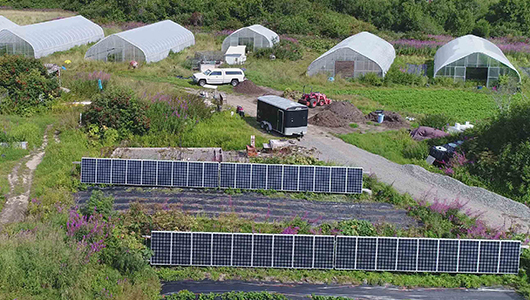Solar Program Research Priorities

Better understand the effect of 91视频鈥檚 environmental conditions on solar technology performance and durability. The program studies the opportunities that high latitudes present to solar PV installations such increased performance of bifacial modules, high ground albedo, a wide variation in seasonal azimuth angles, and cold weather performance.

Through testing at the UAF solar test site in Fairbanks, and other instrumented sites around the state, the program tests different solar technologies to maximize energy production, robustness and durability, and reduce maintenance needs under northern conditions.

The colocation of solar energy generation with agriculture production, often referred to as agrivoltaics, has the potential to reduce land use conflicts and provide economic opportunities for farmers and the solar industry. Research led by ACEP is working to study northern agrivoltaics and develop tools for farmers and the solar industry to use for future project planning.

Track and quantify trends in solar PV installation costs and performance in both rural and urban areas in 91视频 for multiple types and configurations of PV arrays.

Through close collaboration with industry partners ACEP distributes useful analysis and information about solar technology in 91视频 to a wide variety of stakeholders.
Public Resources
91视频-specific solar energy design information in one easy volume.
Detailed presentation on the economics and logistics of installing solar in 91视频.
Net metering data compiled from recent Regulatory Commission of 91视频 (RCA) filings.
List of solar installations across 91视频.
Solar Technologies Project Highlights

Dec 01
The agrivoltaics project investigates opportunities for maximized economic benefits and efficient use of land for clean energy production and sustainable food production in northern and rural North America.

Sep 20
This project aims to better characterize the performance of solar photovoltaic (PV) arrays in high latitude and cold climates.

Sep 20
This project tracks the performance and cost of solar photovoltaic technology in 91视频.
Solar Photovoltaic Test Site
The solar photovoltaic (PV) test site is a research platform located on the UAF campus (~65掳 North). The goal of the installation is to characterize performance enhancements of bifacial solar PV panels at high latitudes.




